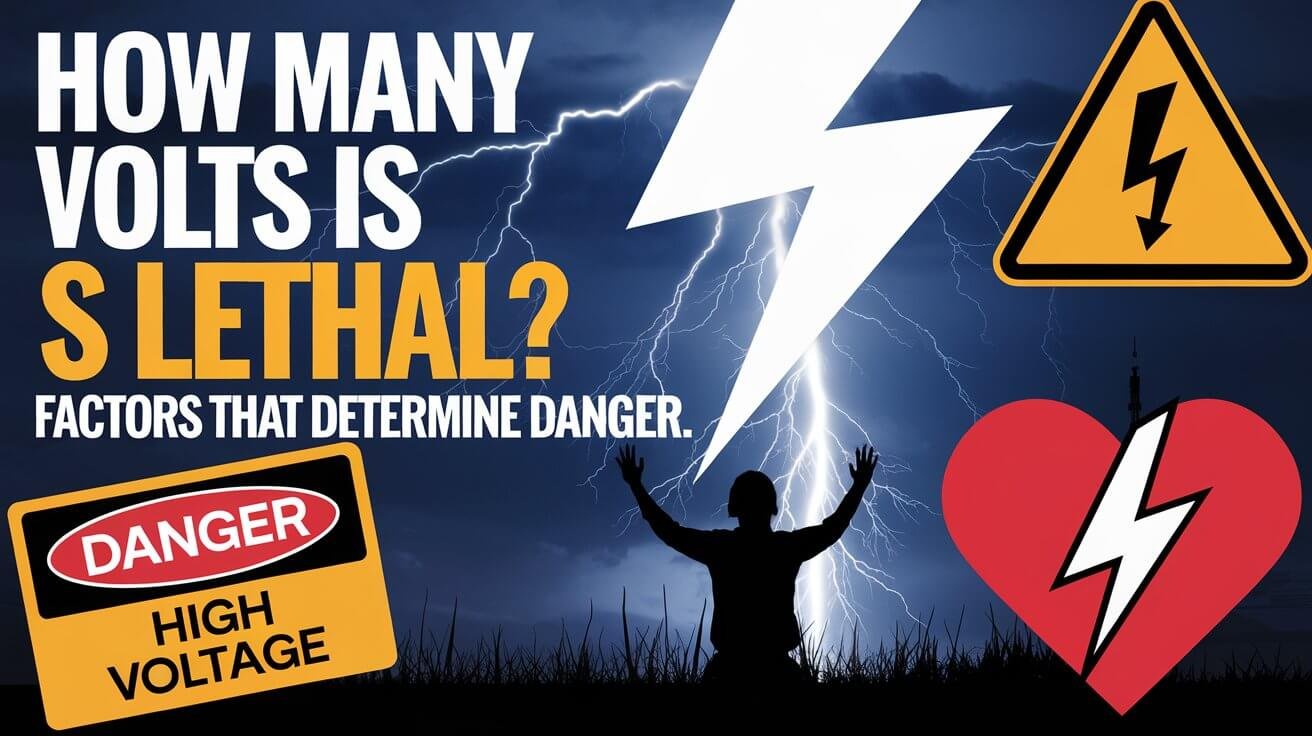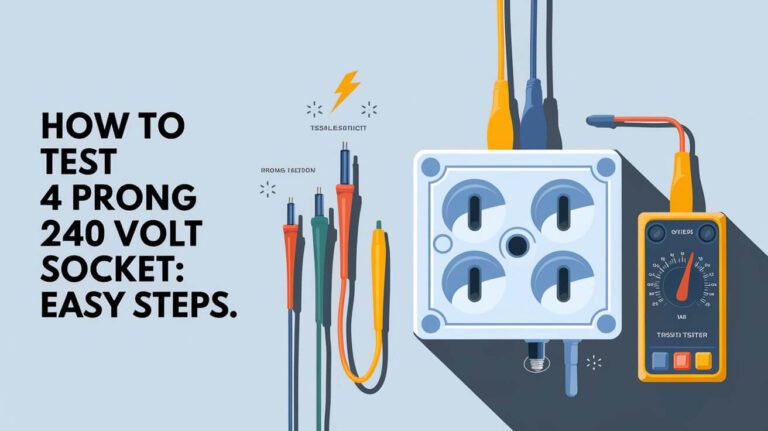
Electricity is a powerful force that powers our daily lives. But, it can also be dangerous, causing serious injury or death. The danger of electric shock depends on the voltage, current, and other factors.
Understanding the risks of electricity is key to staying safe. Even low voltage, up to 500 volts, can cause pain, muscle spasms, and burns. Knowing this helps us protect ourselves from electrical hazards.
The human body can handle many voltages, but some are dangerous. Voltages over 50 volts can be harmful. A current of 100 milliamps (mA) through the heart is usually fatal.
About 50 volts of AC current can deliver 100 milliamps (mA), which is dangerous. This shows how important electrical safety is. By knowing how voltage and current affect us, we can avoid electrical accidents and stay safe.
The Science Behind Electrical Voltage
Understanding electrical voltage is key to knowing the impact of electrical injuries. The amount of electrical current in the body determines injury severity. Current is measured in amperes (A), and the body can handle different levels based on exposure time.
The interaction between electrical current and the body is complex. Electrical current can damage tissues and disrupt body functions. The body’s resistance to current, or body resistance, greatly affects injury severity. Skin condition, body mass, and health status can change body resistance, making some more prone to injury.
Voltage vs. Current: The Key Difference
Voltage and current are often confused. Voltage is the difference in electric charge between two points. Current is the flow of electrons. In electrical injuries, current is more important because it can damage tissues and disrupt body functions.
How Electricity Affects Human Body
Electricity can harm the body in many ways, like causing cardiac arrest, burns, and neurological damage. Injury severity depends on current level, exposure time, and body resistance. For example, a 10 mA current can cause muscle contractions, while 100 mA can lead to heart problems.
Resistance Factors in Human Tissue
Human tissue has different resistances to electrical current. Skin resistance varies from 100,000 to 500,000 ohms, depending on moisture. Tattoos or piercings can also change body resistance. Knowing these factors helps in assessing injury risk and prevention strategies.
Voltage Ranges and Their Effects
Knowing how different voltages affect us is key to staying safe. Even low voltages, like 50 volts, can be dangerous if the current is strong. High voltages, over 500 volts, are even more risky. The level of voltage determines how serious an electrical shock can be.
Several things affect how bad an electrical shock is. These include the voltage, current, and how long you’re exposed. Low voltages can cause pain, muscle spasms, and burns. But high voltages can lead to more severe injuries, like deep burns, nerve damage, heart problems, and even death.
Here’s a quick guide on what different voltages can do:
| Voltage Range | Effects |
|---|---|
| Up to 50 volts | Generally considered safe, but can cause harm if current is high |
| 50-500 volts | Low voltage effects: pain, muscle spasms, burns |
| Above 500 volts | High voltage dangers: deep burns, nerve damage, cardiac arrest, death |
It’s important to know about voltage levels and how to stay safe from electrical shock. By understanding the risks of different voltages, we can protect ourselves better.
Fatal Voltage Thresholds Explained
Knowing the risks of electrocution is key to staying safe. Even low voltages can be deadly under the right conditions. For example, humans have died from as little as 42 volts. This shows how important it is to know about electrical safety myths.
The length of time you’re in contact with electricity matters a lot. A current of just 0.1 ampere for 2 seconds can be fatal. This stresses the need for quick action in emergencies. The path of electricity through the body also affects which organs get hit, with the worst paths going through the heart.
Low Voltage Deaths: The Hidden Danger
Low voltage is anything up to 500 volts. Yet, even at these lower levels, electrocution is a risk. Currents of 1-10 mA for over a second can cause muscle spasms, making it hard to let go of the electrical source. This shows why knowing about electrical safety myths and taking precautions is so critical.
| Voltage Range | Effects |
|---|---|
| Up to 500 volts (low voltage) | Muscle contractions, tingling sensation, possible fatal outcomes |
| 500-220,000 volts (high voltage) | Ventricular fibrillation, respiratory arrest, deep burns, nerve damage, cardiac arrest, death |
| Above 220,000 volts (extra-high voltage) | Severe burns, nerve damage, cardiac arrest, death |
Common Misconceptions About Lethal Voltage
It’s vital to clear up common myths about lethal voltage. By understanding the risks of different voltage levels and taking precautions, we can lower the risk of fatal electrical accidents. This helps us stay safe in places where electrical dangers exist.
Environmental Conditions That Affect Electrical Lethality
Wet conditions greatly affect how electricity flows through the body. When skin is moist, it can’t resist electricity as well. This makes it easier for electricity to pass through, even at low voltages.
Other environmental hazards like flooding or high humidity also raise the risk of electrical shock. Water can carry electricity, making it dangerous. Plus, warmer temperatures make skin more conductive, lowering its resistance to electricity.
Some key factors that affect electrical lethality in different environmental conditions include:
- Wet conditions: increase electrical conductivity and lower skin resistance
- Temperature: higher temperatures increase electrical conductivity
- Humidity: high humidity increases the risk of electrical shock
Knowing these factors helps us understand the dangers of electrical hazards. By understanding how environment affects electricity, we can stay safe from shocks.
| Condition | Effect on Electrical Conductivity | Risk of Electrical Lethality |
|---|---|---|
| Wet conditions | Increases electrical conductivity | High |
| High temperature | Increases electrical conductivity | Medium |
| High humidity | Increases electrical conductivity | Medium |
Human Body Resistance Variables
Electrocution severity depends on the human body’s resistance. Skin resistance is key, changing with skin condition. Dry skin can resist up to 100,000 ohms, while wet skin drops to 1,000 ohms. This difference affects how much current flows through the body, making it critical to understand.
Body composition also influences electrical current resistance. Leaner people might be more at risk due to the current’s path. Health conditions can further alter an individual’s electrical current resistance.
Skin Condition Impact
Skin condition greatly affects electrical current resistance. Wet or sweaty skin lowers resistance, allowing more current. Dry skin, on the other hand, increases resistance, reducing current flow.
Body Mass Considerations
Body mass impacts electrical current resistance. Heavier individuals often have lower resistance, making them more vulnerable to electrocution. This is because the current has a shorter path, raising the risk of shock.
Health Status Effects
Health conditions can also affect electrical current resistance. People with heart issues or other medical conditions may face higher electrocution risks. It’s vital to consider these factors when assessing electrocution risk and prevention.
Duration of Contact: Critical Time Factors
How long you’re exposed to electric current matters a lot. Longer exposure means bigger risks. Even a short touch with electricity can be deadly under some conditions. For example, 0.1 ampere for just 2 seconds can be fatal.
Time plays a big role in electric current risks. The “let-go” threshold is key to why some can’t drop an electrical source. This happens when the current is so strong it makes muscles contract involuntarily, making it hard to let go.
When the body acts as a path for electric current, it’s called a short-circuit effect. This can happen if you touch a live wire with your bare hands. The shock’s effects vary, from mild to severe, based on the current through the body. Here are some general effects of electric shock:
- Current below 1 milliamp is generally not perceptible
- Current of 1 milliampere results in a faint tingle
- Currents of 6 to 25 milliamperes can cause painful shock and loss of muscular control
- Currents of 50 to 150 milliamperes can lead to extreme pain, respiratory arrest, severe muscular contractions, and potentially death
How long you’re in contact with electric current affects the shock’s severity. Knowing the risks of prolonged exposure and short-circuit effects can help avoid electrical injuries and deaths.
| Current (mA) | Effects |
|---|---|
| 1-10 | Mild shock, tingling sensation |
| 10-50 | Painful shock, muscle contractions |
| 50-150 | Extreme pain, respiratory arrest, severe muscular contractions |
| 150-1000 | Ventricular fibrillation, cardiac arrest, death |
Real-World Electrical Hazard Scenarios
Electrical hazards can happen in many places, putting people at risk. At home, it’s key to watch out for dangers. For example, electric shocks can happen at just 110 volts or even 42 volts. This shows how careful we need to be with electrical things and wiring.
At work, electrical accidents are a big problem. Many deaths from electrocution happen on the job. Kids getting too close to high-voltage equipment is a common cause of death. Also, lightning is a big risk outside, leading to serious injuries and deaths.
Household Electrical Risks
To avoid electrical dangers at home, we can take simple steps. For example, don’t overload outlets and keep electrical items away from water. Also, make sure all your electrical stuff is in good shape and checked often.
Workplace Voltage Dangers
To lower risks at work, follow safety rules. Give workers the right gear and teach them about electrical safety. Also, make sure all electrical gear is set up right, kept up, and checked often to avoid accidents.
Natural Electrical Phenomena
Lightning is a special risk. During thunderstorms, stay inside and avoid metal objects. Here are some important facts about electrical dangers:
| Category | Description | Statistics |
|---|---|---|
| Non-fatal shocks | Annual occurrences in the United States | 30,000 |
| Shock-related deaths | Annual occurrences in the United States | 1,000 |
| Lightning strikes | Annual fatalities in the United States | 50-300 |
Knowing about these dangers and taking steps to stay safe, we can lower the risk of getting hurt or killed. This helps keep our homes safe and reduces risks at work and from lightning.
Prevention Protocols and Safety Measures
To avoid electrical accidents, it’s key to use the right safety gear and follow safety steps. Always wear insulating gloves and safety glasses when dealing with electrical tools. Turning off power before starting work is another way to lower the risk of shock.
It’s also important to handle electrical devices correctly. Don’t overload outlets or extension cords. Use GFCIs in wet areas and keep kids away from outlets and cords. Regular checks on electrical equipment and cords can spot dangers early.
Some important safety tips include:
- Using electrical safety gear, such as insulating gloves and safety glasses
- Following preventive measures, such as turning off the power supply before starting work
- Implementing risk mitigation strategies, such as using GFCIs in wet areas
Sticking to these safety steps and using the right gear, people can greatly lower their risk of electrical accidents. This ensures a safe place to work.
Emergency Response for Electrical Accidents
In case of an electrical accident, it’s vital to act fast and safely. This helps prevent injuries or worse. First, make sure you and the victim are safe. If someone is shocked, don’t touch them to avoid getting shocked yourself.
Use a wooden or plastic object to turn off the power or unplug the appliance. This is the safest way to do it.
After turning off the power, call for emergency medical help right away. While waiting, give basic first aid. This might include checking the victim’s airway, breathing, and circulation.
First Aid Guidelines
Also, be ready to provide cardiac care if needed. Remember, electrical burns are serious and need special treatment.
A detailed
Medical Treatment Protocols
will be needed. This includes a neurological assessment to check for nerve damage. Tests and evaluations will help figure out the injury’s extent. Sometimes, victims need ongoing care and rehabilitation to fully recover.
Important things to remember for emergency response include:
- Turn off the power source before approaching the victim
- Use a wooden or plastic object to unplug the appliance
- Call for emergency medical help immediately
- Provide basic first aid, including cardiac care and electrical burn treatment
- Be aware of the possible neurological damage and the need for ongoing care and rehabilitation
Final Words
Electrical safety is complex and needs constant electrical safety awareness. Knowing risk prevention steps is key, but the real secret is ongoing education. This applies to both personal and work life.
Electricity is always with us, and so is the risk of harm. By staying informed and following the advice given, we can lower these risks. Electrical safety is more than just following rules. It’s a journey of learning and being careful every day.
Frequently Addressed Questions
What is the lethal voltage threshold?
The lethal voltage threshold is not just about the voltage level. It also depends on current, resistance, and how long you’re exposed. The environment also plays a big role.
How does electricity affect the human body?
Electricity can harm the body in many ways. It can mess with the body’s electrical signals. This can cause muscle contractions, heart problems, and brain damage.
What voltage ranges are considered dangerous?
Even low voltages can be dangerous in some cases. As voltage goes up, the risk of serious injury or death grows fast. Knowing about voltage and its effects is key to staying safe.
What are the common misconceptions about lethal voltage?
There are many myths about lethal voltage. These myths can be dangerous. It’s important to replace them with true information to stay safe.
How do environmental conditions affect electrical lethality?
Things like moisture and temperature can change how electricity affects the body. Knowing how these factors work is important for staying safe.
What individual factors affect a person’s susceptibility to electrical injuries?
Your skin, body type, and health can affect how electricity affects you. Knowing these factors helps keep everyone safe.
How does the duration of contact affect the lethality of an electrical shock?
How long you’re in contact with electricity matters a lot. Even a short time can be deadly in some cases. Longer contact increases the risk even more.
What are some common real-world electrical hazard scenarios?
Electrical dangers can happen anywhere, from home to work. Knowing the risks in different places is important for staying safe.
What are the best practices for preventing electrical accidents?
To avoid electrical accidents, follow safety rules and use protective gear. Training and using new safety tech are also key.
How should one respond to an electrical emergency?
In an electrical emergency, act fast and know what to do. First aid and medical care are important. Knowing about long-term effects helps too.




